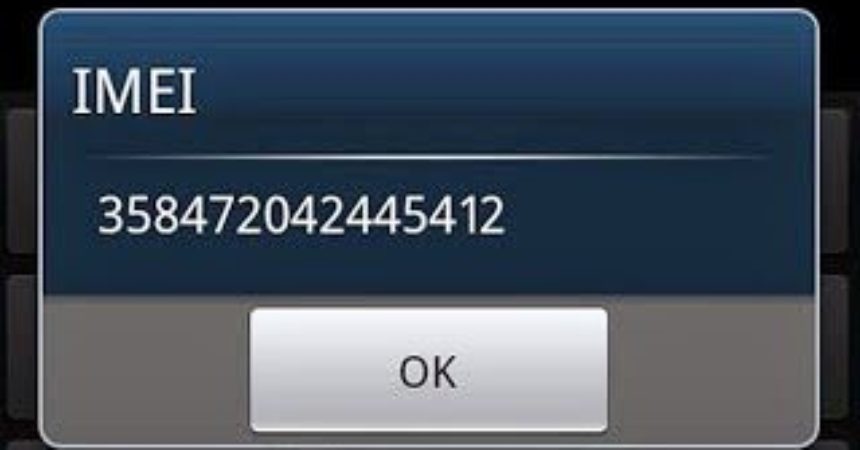Fix The Unknown Baseband Version Issue On A Samsung Galaxy
If you have a Samsung Galaxy device that was working just fine but all of a sudden lost signals are gone, you are not going to be able to send texts or make calls. The first instinct is to perform a factory restore, but sometimes, you will find you this doesn’t work. This means you are facing the unknown baseband version issue. In this guide, we’re going to show you how to fix it.
This guide should work with a Samsung Galaxy S1, S2, S3, S4, Note 1, Note 2, Note 3, S4 and other devices.
Main Symptoms:
How do you know this is the issue you’re facing? If you have one of the following:
- Unavailable Bluetooth address.
- Inconsistently working WiFi connection
- Constant rebooting
- Fake IMEI or Null IMEI#
- Null Serial number
- If you are unable to register to network.
How to fix:
One of the main reasons for this problem is that your EFS data folder is deleated or corrupted. Try backing up the EFS data folder. If this won’t work, try the following steps.
For all variants:
Step 1: Backup and restore EFS Data/IMEI
Step 2: Root the device.
Step 3: Enable USB debugging. Do so by going to Settings >Developer Options>USB debugging “checked”.
Step 4: Connect your device to a PC.
Step 5: Download EFS Professional v2.0 .
Step 6: Extract file and run efs.exe
Step 7: You should see a pop-up, choose EFS Professional.
Step 8: A new window should be opened where you will see if your device is connected and ready for the process.
Step 9: You will see the following tabs on the top of the window: Welcome, Backup, restore, Qualcomm, Debug.
Step 10: Select the backup tab.
Step 11: Select all the options in the partition on left side, click on Backup.
Step 12: Save the backup file of your EFS data to a secure locations.
Step 13: In a few minutes, you EFS data folder should backup.
Step 14: Go to the Restore tab and select the backup file that you saved. Click on restore. This should fix the Samsung Galaxy unknown baseband version.
You can also try this:
FIX USING EFS RESTORE EXPRESS:
Step 1: Enable USB debugging. Do so by going to Settings >Developer Options>USB debugging”checked”.
Step 2: Now connect device to Computer.
Step 3: Download EFS Restorer Express.
Step 4: Open EFS restore express folder and run EFS-BACKUP.BAT file.
Step 5: Select restore the EFS via ODIN.
For Galaxy S2:
Step 1: Backup and restore EFS Data/IMEI
Step 2: Root the device.
Step 3: Enable USB debugging. Do so by going to Settings >Developer Options>USB debugging “checked”.
Step 4: Connect your device to a PC.
Step 5: Download EFS Professional v2.0 .
Step 6: Extract file and run efs.exe
Step 7: You should see a pop-up, choose EFS Professional.
Step 8: A new window should be opened where you will see if your device is connected and ready for the process.
Step 9: You will see the following tabs on the top of the window: Welcome, Backup, restore, Qualcomm, Debug.
Step 10: Select the backup tab.
Step 11: Select all the options in the partition on left side, click on Backup.
Step 12: Save the backup file of your EFS data to a secure locations.
Step 13: In a few minutes, you EFS data folder should backup.
Step 14: Go to the Restore tab and select the backup file that you saved. Click on restore. This should fix the unknown baseband version.
For Galaxy S3:
Step 1: Backup and restore EFS Data/IMEI
Step 2: Root the device.
Step 3: Enable USB debugging. Do so by going to Settings >Developer Options>USB debugging “checked”.
Step 4: Connect your device to a PC.
Step 5: Download EFS Professional v2.0 .
Step 6: Extract file and run efs.exe
Step 7: You should see a pop-up, choose EFS Professional.
Step 8: A new window should be opened where you will see if your device is connected and ready for the process.
Step 9: You will see the following tabs on the top of the window: Welcome, Backup, restore, Qualcomm, Debug.
Step 10: Select the backup tab.
Step 11: Select all the options in the partition on left side, click on Backup.
Step 12: Save the backup file of your EFS data to a secure locations.
Step 13: In a few minutes, you EFS data folder should backup.
Step 14: Go to the Restore tab and select the backup file that you saved. Click on restore. This should fix the Samsung Galaxy unknown baseband version.
For Galaxy S4:
Step 1: Enable USB debugging. To do so, go to Settings >Developer Options>USB debugging”checked”.
Step 2: Now connect device to PC.
Step 3 : Download EFS Restorer Express.
Step 4: Open EFS restore express folder and run the EFS-BACKUP.BAT file.
Step 5: Select restore the EFS via ODIN.
For Galaxy S5:
Step 1: Backup and restore EFS Data/IMEI
Step 2: Root the device.
Step 3: Enable USB debugging. Do so by going to Settings >Developer Options>USB debugging “checked”.
Step 4: Connect your device to a PC.
Step 5: Download EFS Professional v2.0 .
Step 6: Extract file and run efs.exe
Step 7: You should see a pop-up, choose EFS Professional.
Step 8: A new window should be opened where you will see if your device is connected and ready for the process.
Step 9: You will see the following tabs on the top of the window: Welcome, Backup, restore, Qualcomm, Debug.
Step 10: Select the backup tab.
Step 11: Select all the options in the partition on left side, click on Backup.
Step 12: Save the backup file of your EFS data to a secure locations.
Step 13: In a few minutes, you EFS data folder should backup.
Step 14: Go to the Restore tab and select the backup file that you saved. Click on restore. This should fix the Samsung Galaxy unknown baseband version.
Have you fixed the unknown baseband version of your Samsung Galaxy device?
Share your experience in the comments box below.
JR
[embedyt] https://www.youtube.com/watch?v=zaJ8TdKa5RI[/embedyt]


![Rooting Galaxy Tab Pro 12.2 (LTE) SM-T905 [Android 4.4.2 KitKat] Rooting Galaxy Tab Pro 12.2 (LTE) SM-T905 [Android 4.4.2 KitKat]](https://www.android1pro.com/wp-content/uploads/2015/10/A1-2-270x225.jpg)




amigo estos pasos los puedo hacer para restaurar la carpeta efs de mi htc one m7?
carefully follow the easy step by step guide above.
This should work !